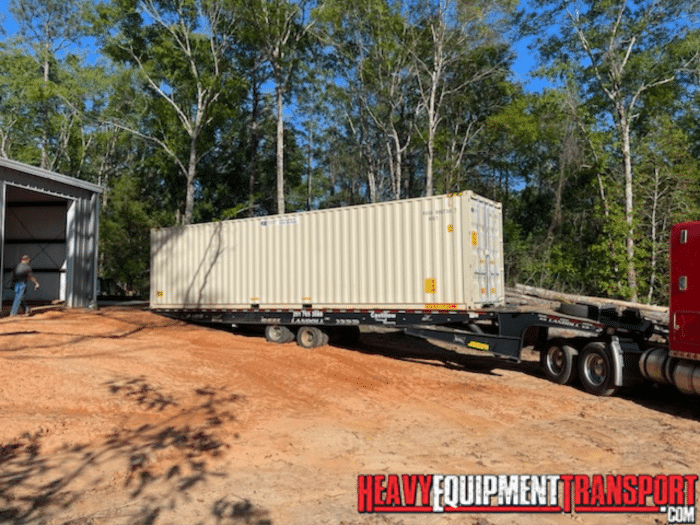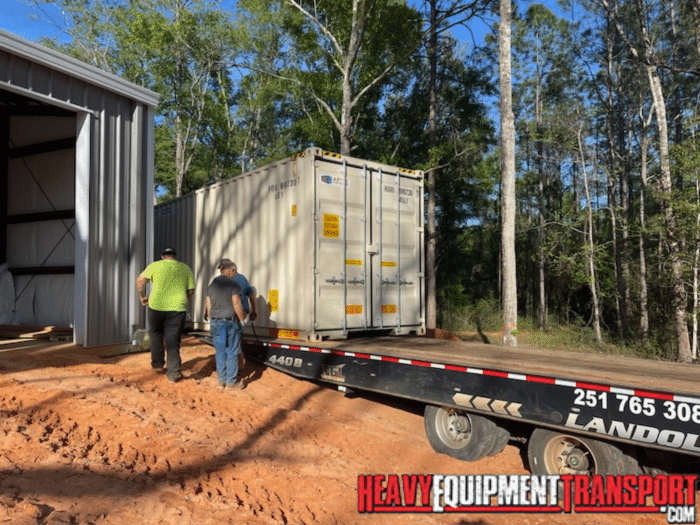What is Port-to-Port Container Transport?

Francisca Olive / May 2023
Port-to-port transport is the transportation of cargo containers between two different ports. This strategy has become integral to many supply chains as firms rely more and more on international trade. In this post, we’ll examine the fundamentals of port-to-port container transport.
What is Port-to-Port Shipping Container Transport?

The difference between port-to-port shipping and door-to-door shipping is that port-to-port shipping does not include the services of transporting the goods from the point of origin, such as a warehouse or manufacturing center, to the port of loading. Likewise, it does not cover the transportation of the goods to the final destination after they reach the port of discharge.
Port-to-port shipping is ideal for seasoned shippers with the know-how to independently manage all other parts of the shipping process, as on-carriage and pre-carriage services are omitted. That means taking care of all the necessary paperwork, getting through customs at both ends, setting up inland transport and a storage facility, etc.

Transport Your Container Today
Heavy Equipment Transport is always available for a quote. Fill out the form or give us a call now! (888) 730-2951
Services Included in Port-to-Port Shipping
Port-to-port shipping container costs include expenses associated with transporting goods from the port of origin to the destination port. The costs usually include the ocean freight rate( the rate at which the cargo is to be transported) and a container rental fee (which pays for the rental of the shipping container for the duration of the transportation process). Also included is a security fee that ports impose for reasons of maritime security. Additional port-to-port services include container loading and unloading times, cargo tracking, document issuance (such as a Bill of Lading), and document filing costs. There may be additional fees for handling at either the country of origin or the country of destination.
Factors to Consider With Port-to-Port Shipping
Cargo Insurance
Port-to-port shipping does not include cargo insurance. Carriers are mandated by law to have carrier liability insurance for all cargo they transport. However, this insurance seldom offers enough compensation for losses incurred by shippers.
Customs Clearance
Customs officials at the port of origin and destination must receive proper documentation and papers. In most cases, this step is not covered by port-to-port shipping container costs. The documentation requirements might be very different in each nation. Hiring a destination agent will help clear up any misunderstandings or miscommunications that may arise. An experienced destination agent will be well-versed in the import regulations of your final destination and can guide you through the necessary paperwork and provide an estimate of the taxes and duties you will owe.
Inland Transportation
You will need to make arrangements for inland transportation to get your shipment to and from the ports of loading and discharge, respectively. The specifics of these arrangements will depend on your consignment’s origin location and final delivery destination.
These may comprise rail services, trucking services, or a mix of the two. Because of the current truck driver scarcity, it is essential to prepare ahead if you need to arrange inland transportation in the U.S.
Port Schedule
Without pre-carriage or on-carriage services, you’ll be responsible for getting your shipment to the port on time for the sail date and picking it up from the port of origin as soon as possible once it arrives to avoid fees like demurrage. While planning your drop-off and pickup, double-check the port authority’s operating hours to avoid delays. You should be aware of the port’s working hours and any holidays and/or strikes that may affect port employees.
Local Charges
In most cases, port-to-port shipping costs do not include local fees like the Bill of Lading release fee, associated port taxes, wharfage, etc. Nevertheless, as previously stated, some port-to-port quotes may contain local handling charges at the port of origin and/or destination.
Key Takeaway
Port-to-port container transport is the most cost-effective method of overseas shipping. This is because shippers can deliver their cargo to a port of origin in the United States and pick it up at a port of discharge in the destination country.

William Thomas
Heavy Transport Specialist
Being able to lead a team of such talented logistics agents has been a wonderful experience over the past ten years. If you would like to know anything more about the heavy equipment transport services we offer, don't hesitate to give us a call!